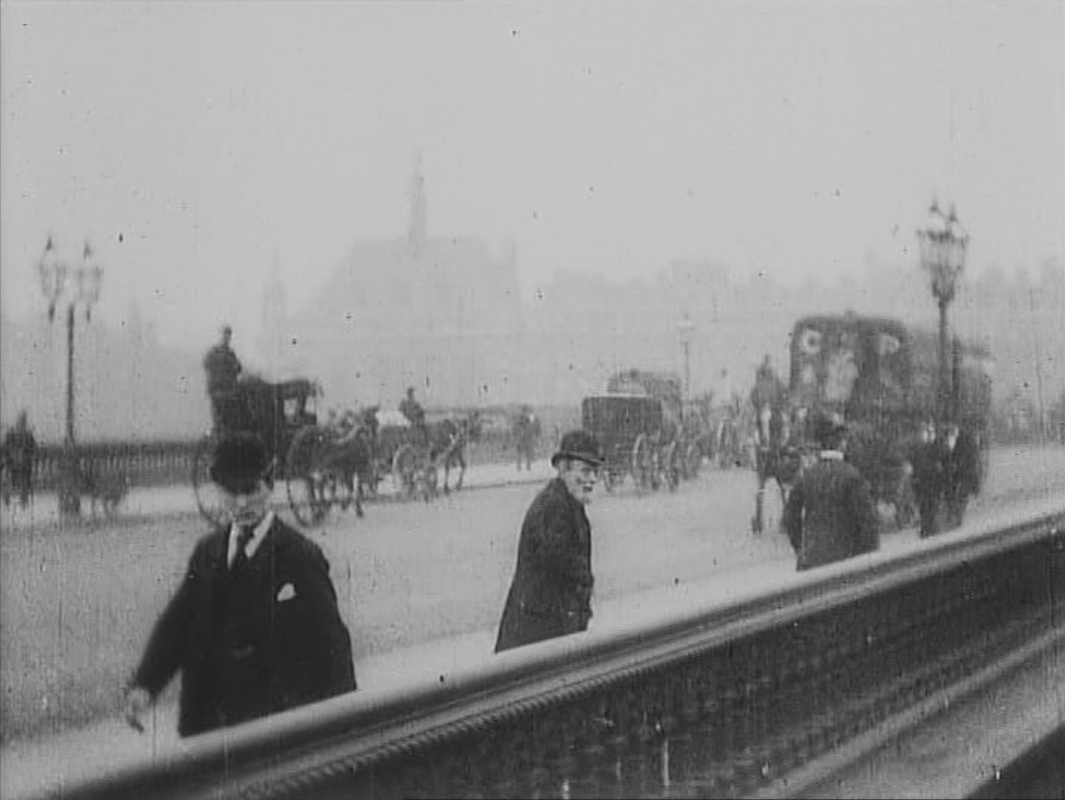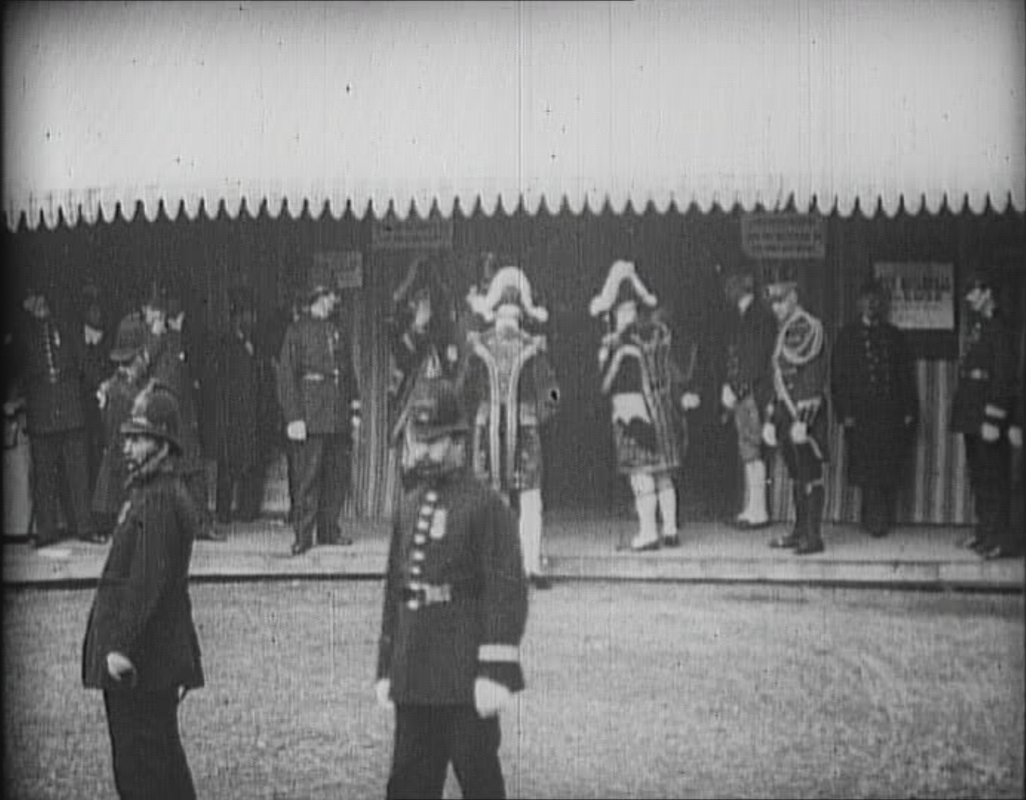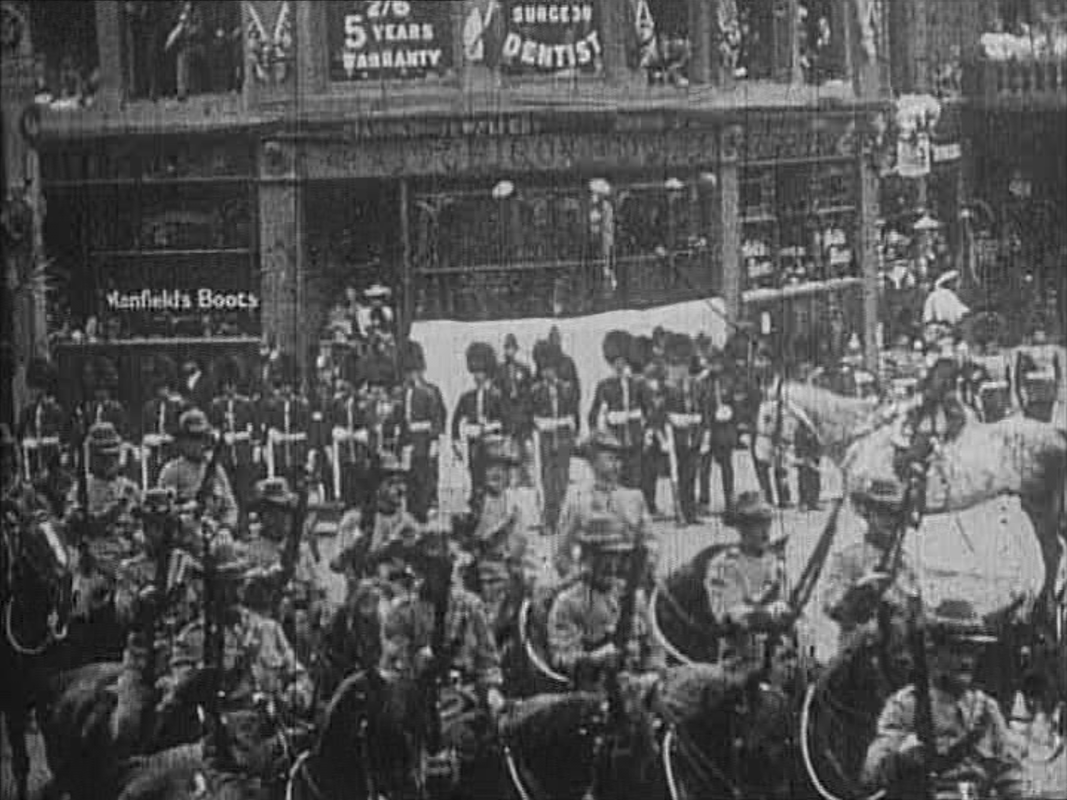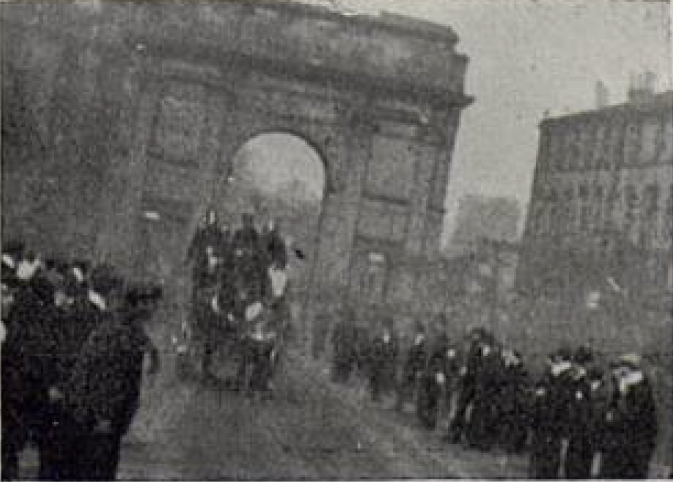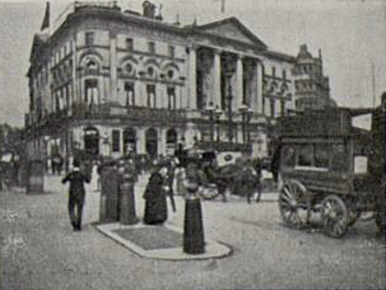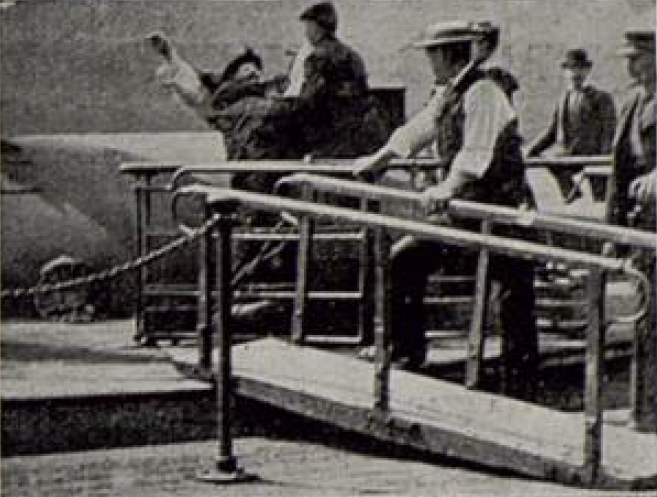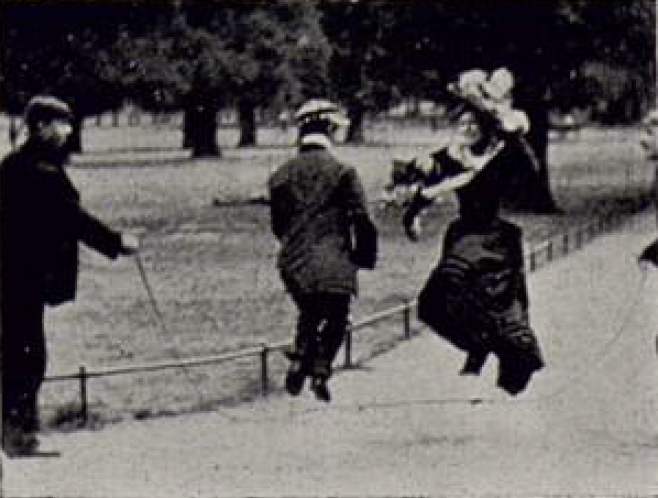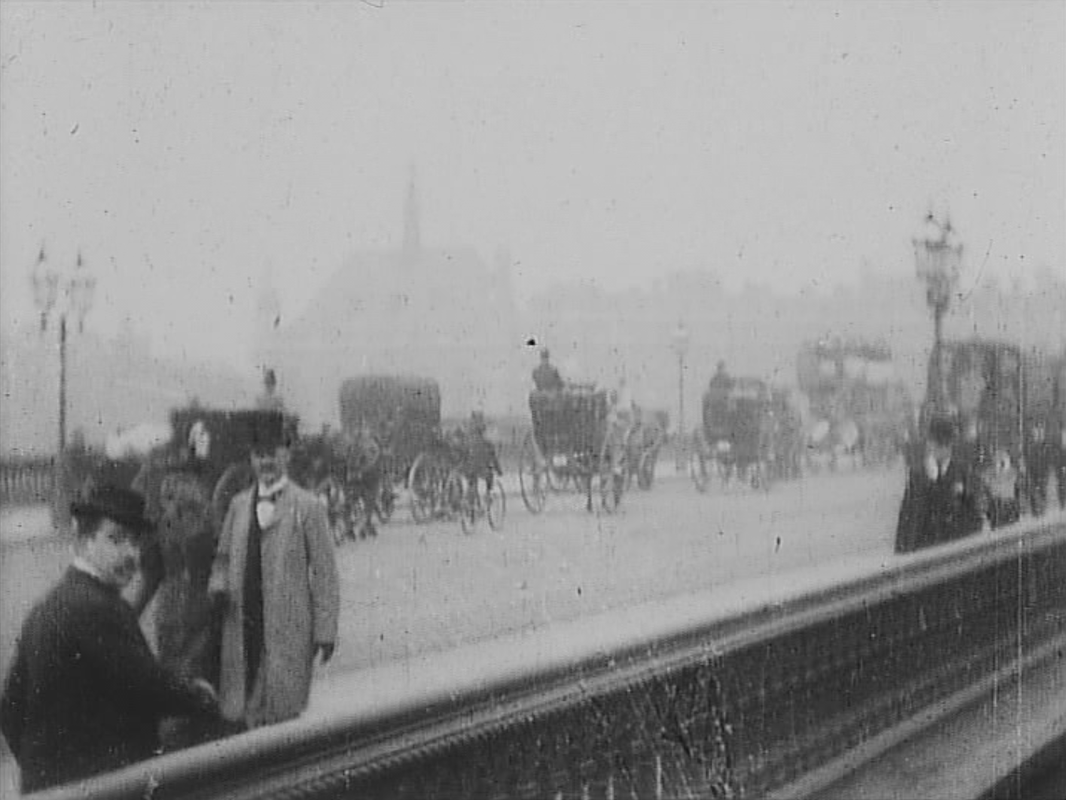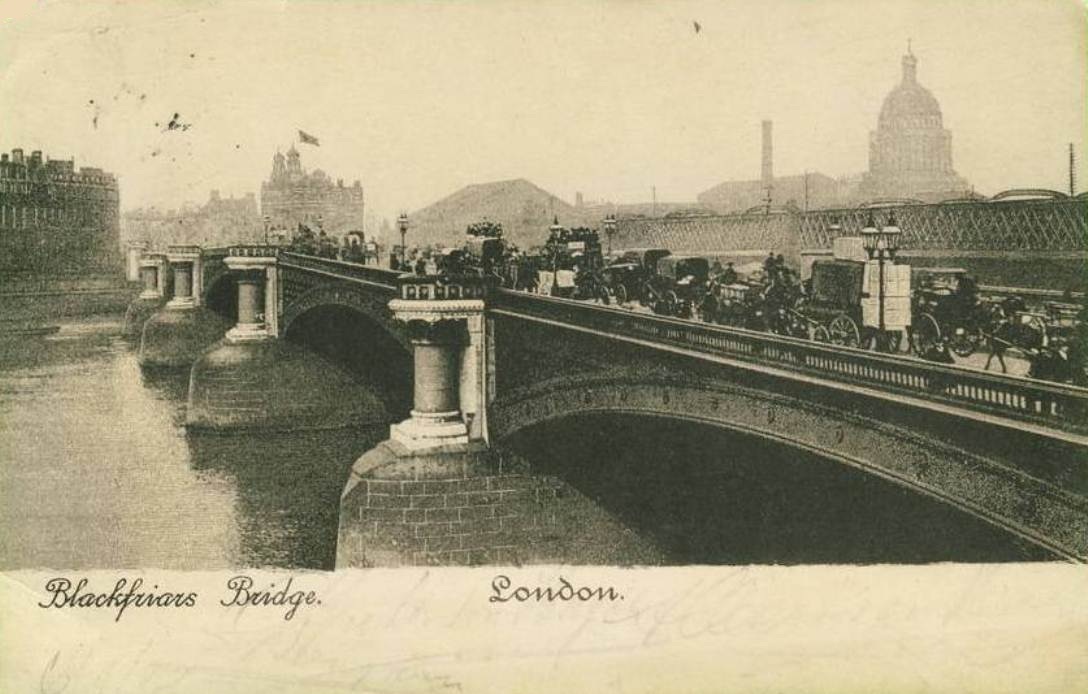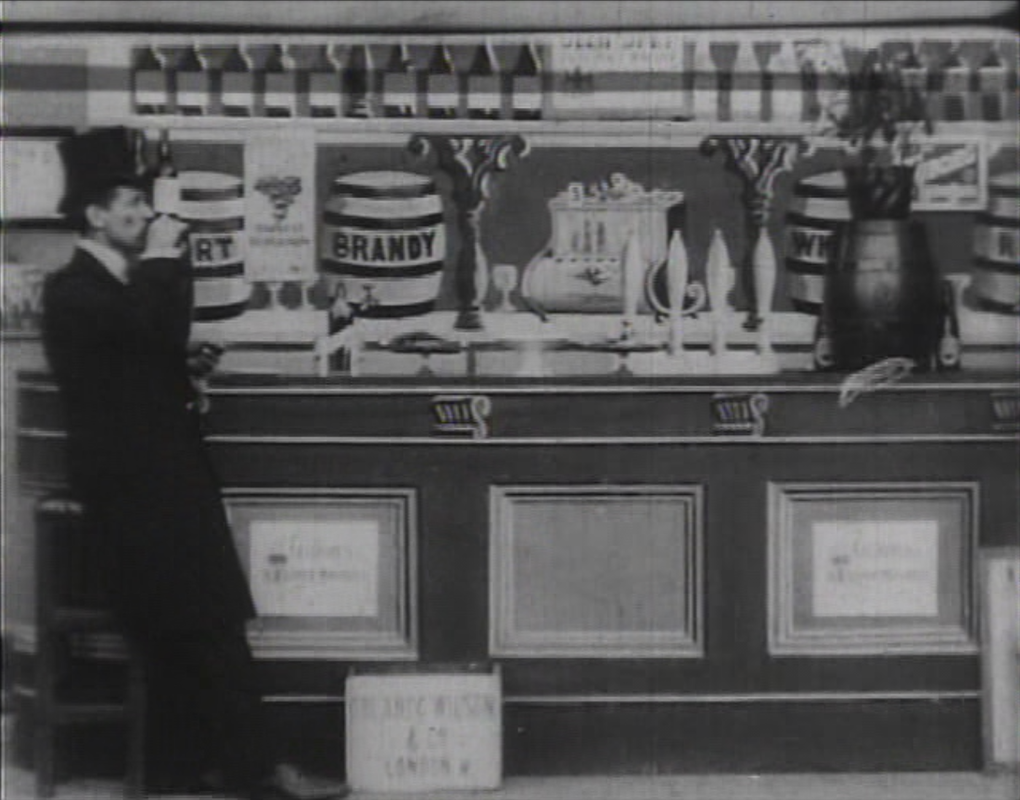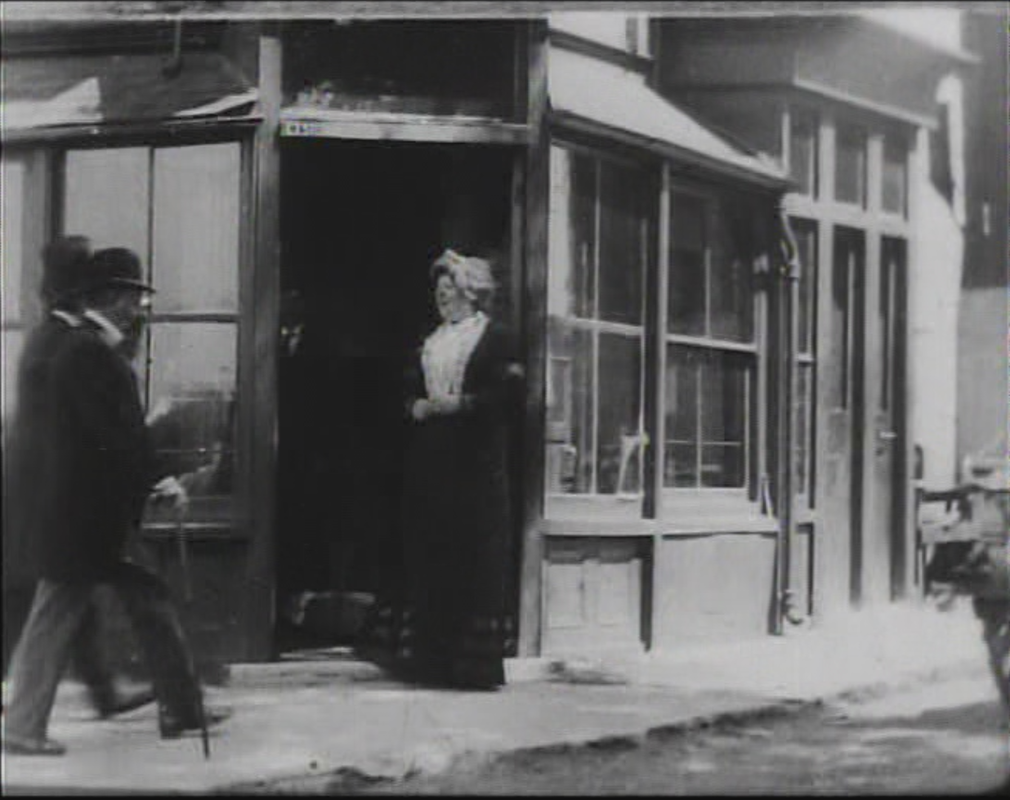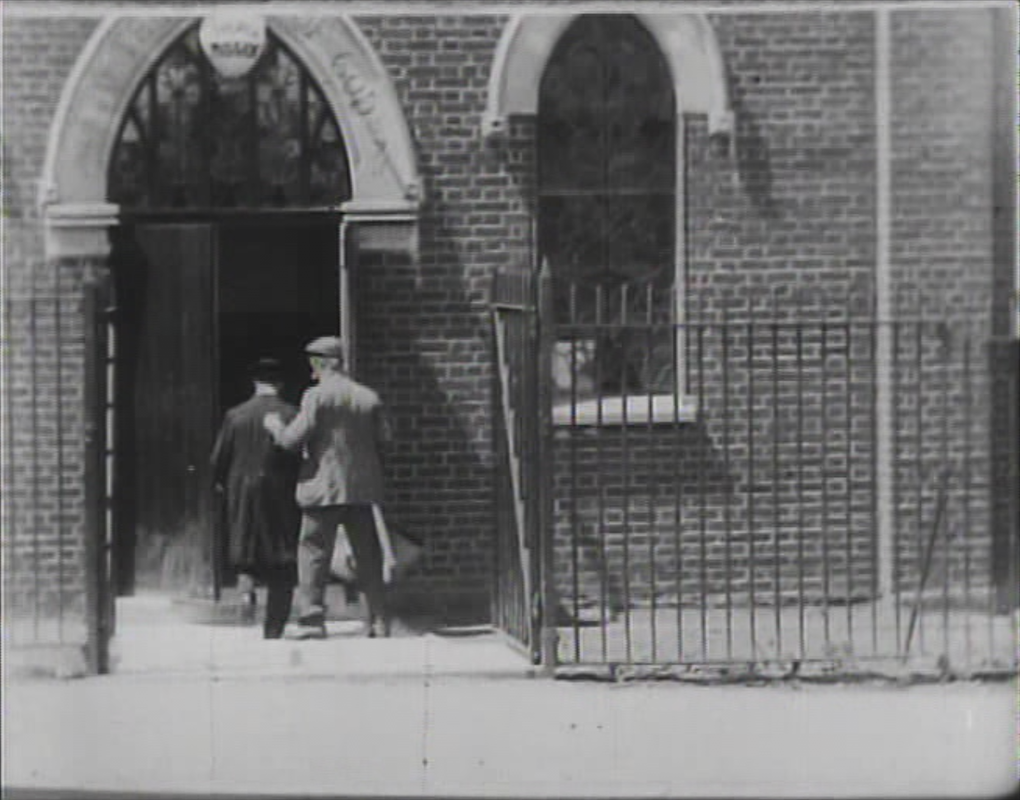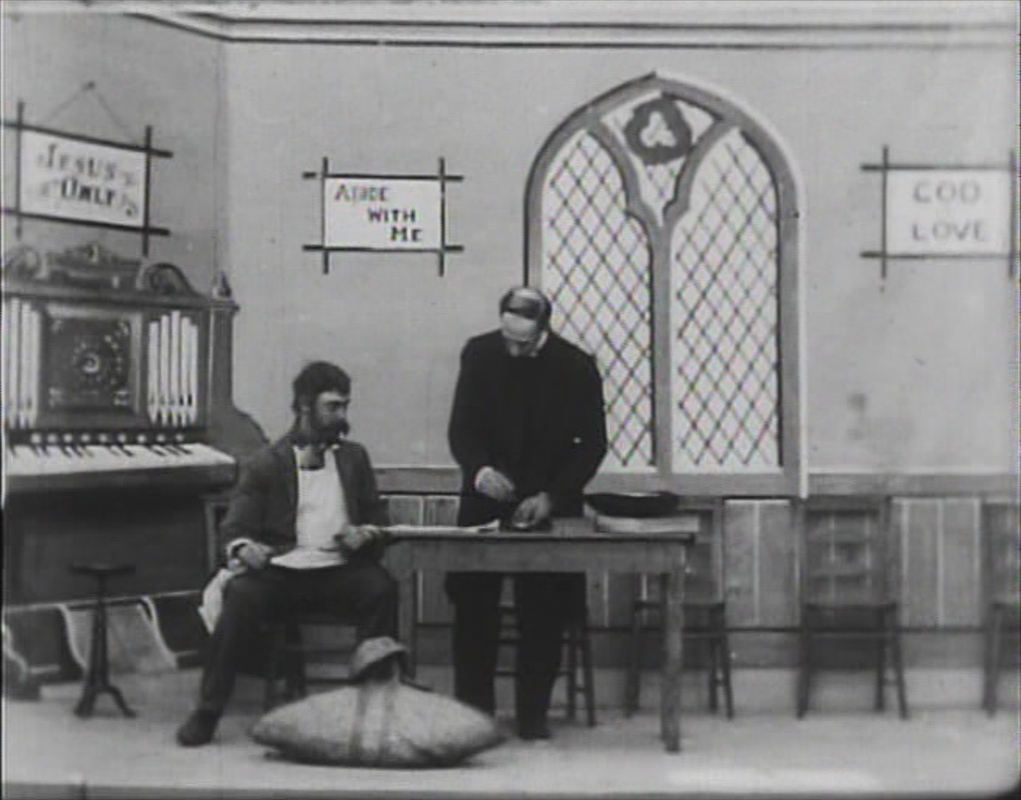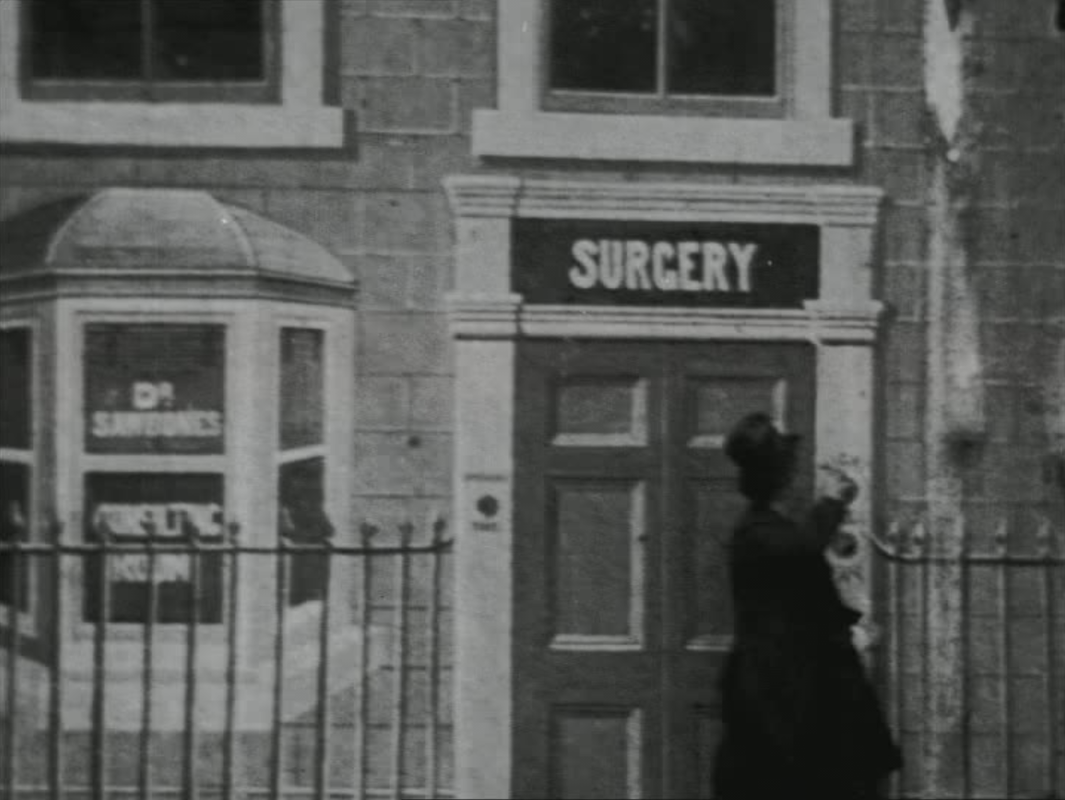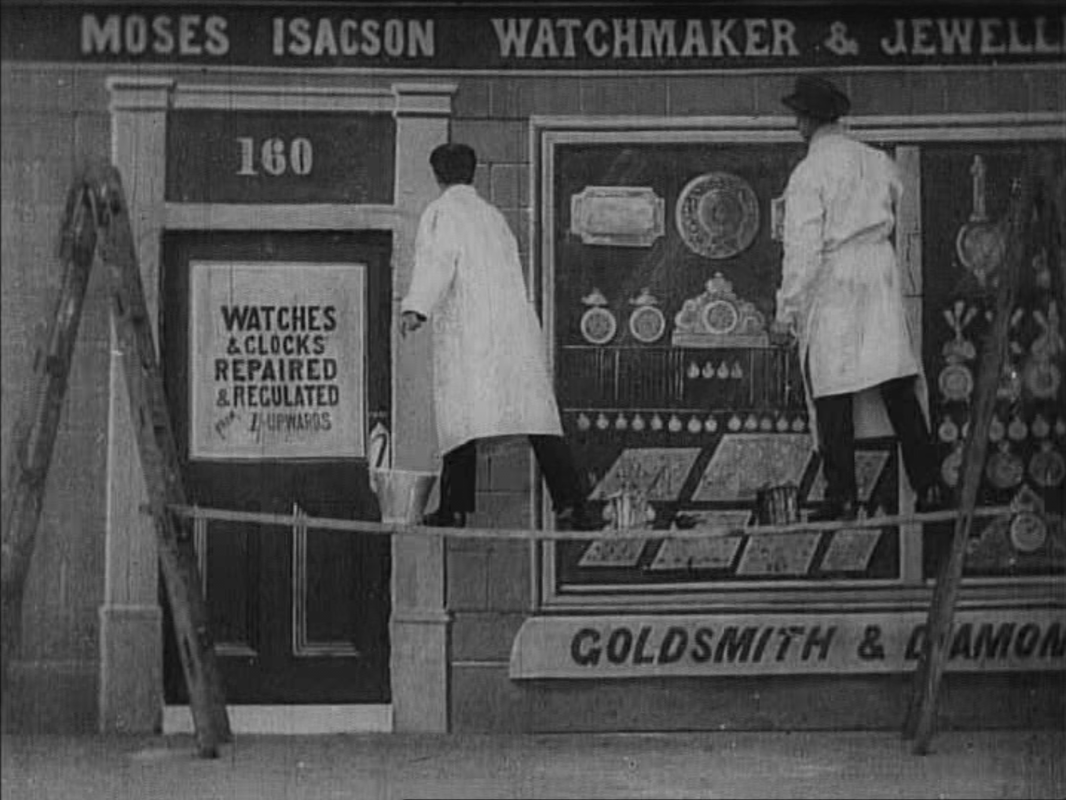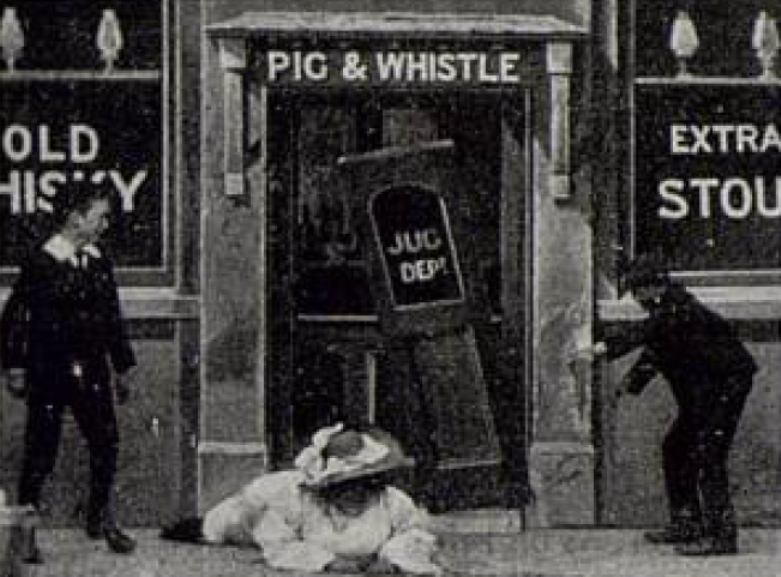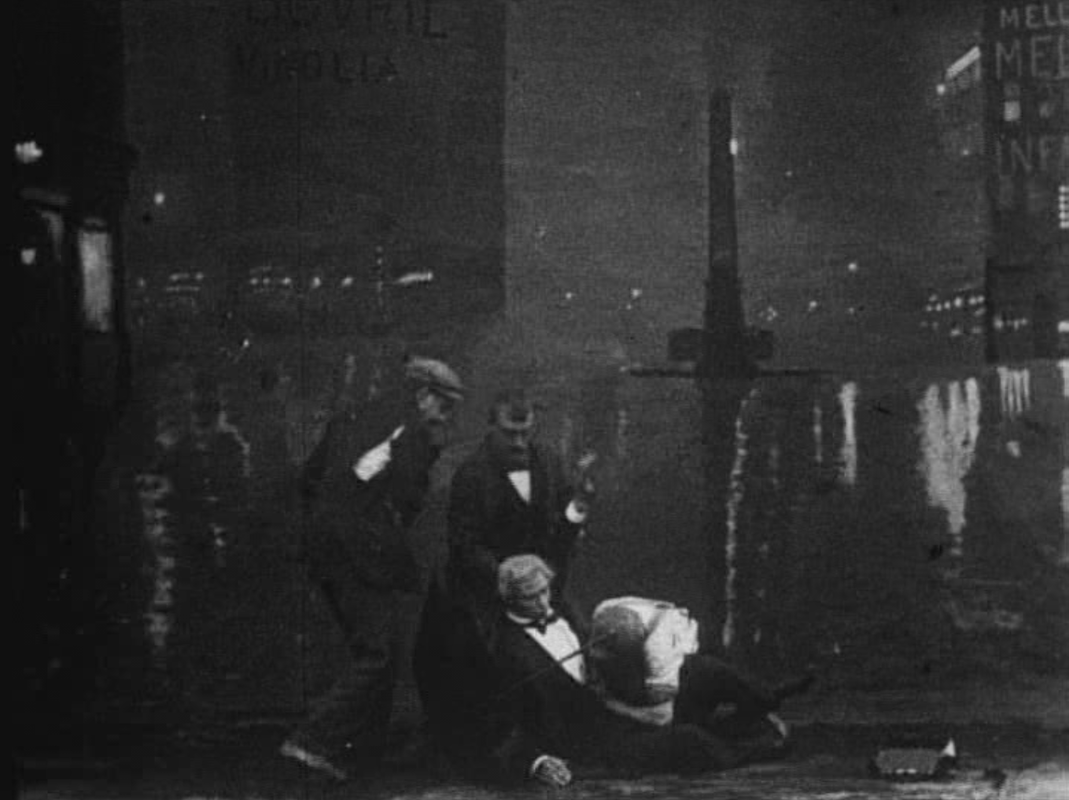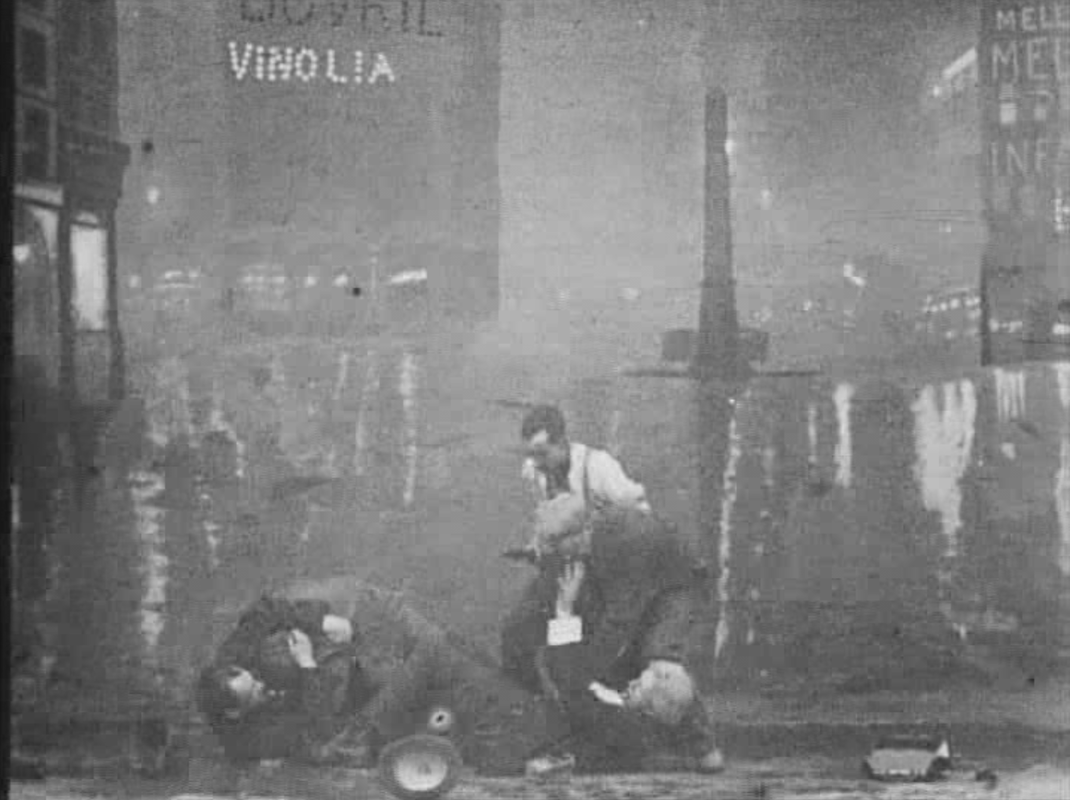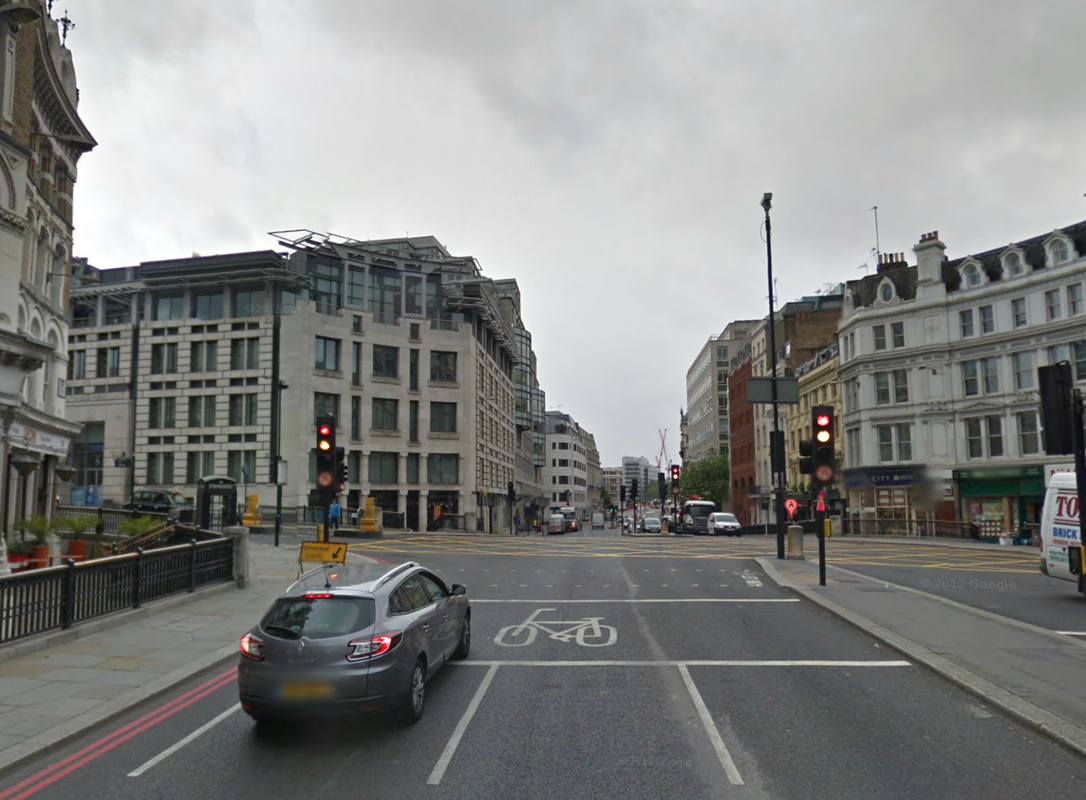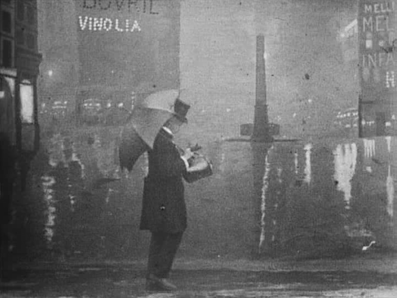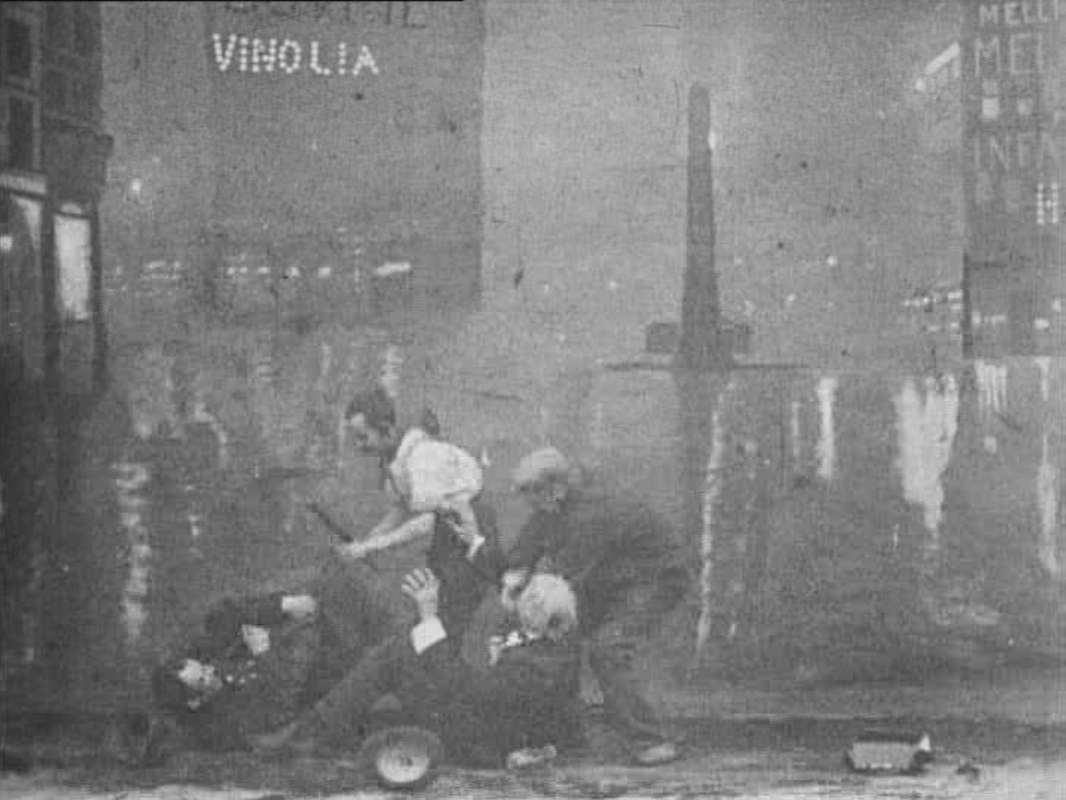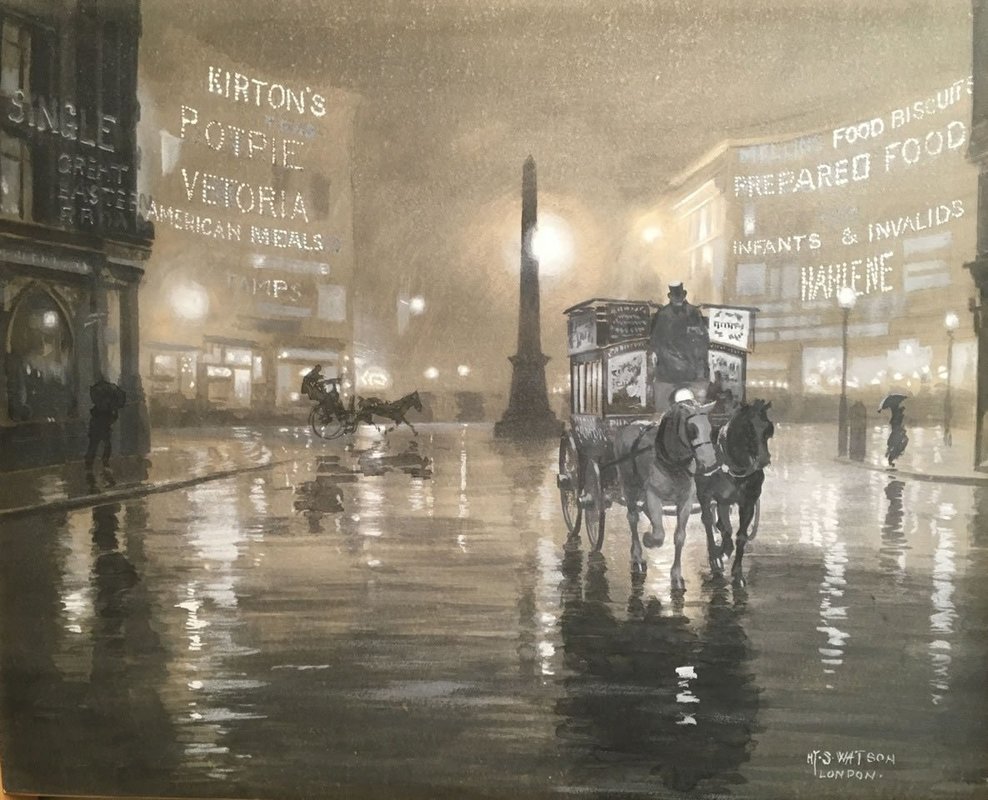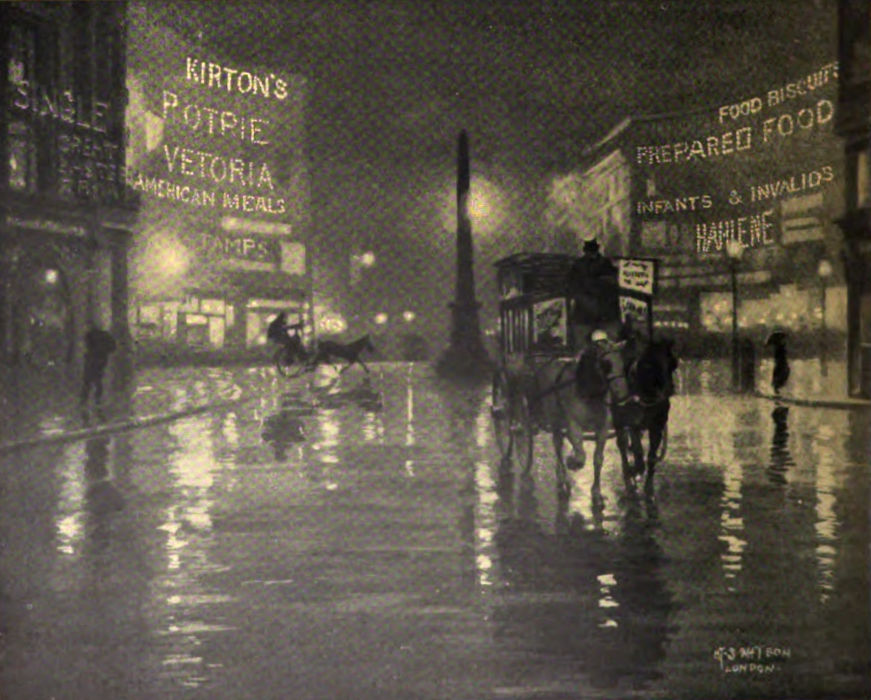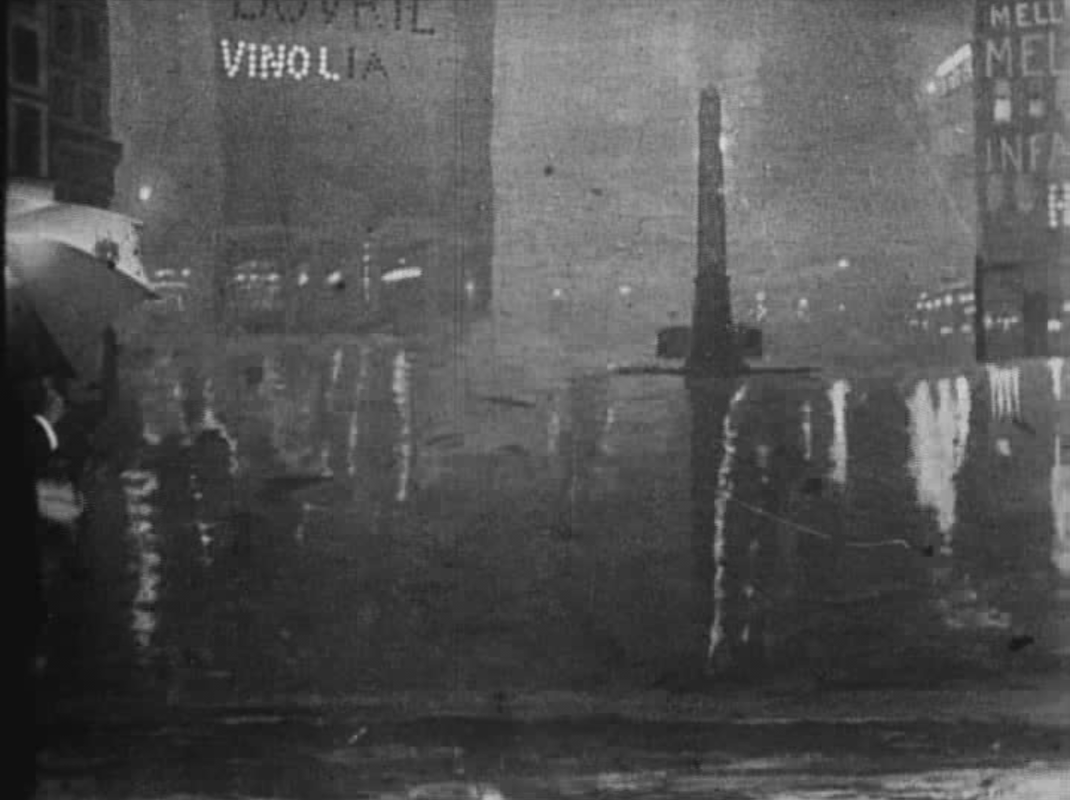Robert Paul in London c.1900: tour guide and film maker
We are used to the idea of early cinema as a substitute for tourism. Less usual is the sight of the filmmaker facilitating actual tourism, as Robert Paul was moved to do when he published a brochure entitled 'What to photograph in London'. Here is the announcement published in 1901 in The Process Engraver's Monthly, volume 8, p.254:
|
"What to photograph in London" is the title of a folding card, obtainable gratis from Robert W. Paul, 68 High Holborn, or Sanders & Crowhurst, 71 Shaftesbury Avenue, London W.C. In the space of a postcard it gives the things a visitor in a hurry should photograph, with particulars as to best time of day, whether time or instantaneous exposure is preferable, permits to use a camera, etc.
|
A fuller account of the postcard-sized brochure appeared in a 1903 issue of The Photographic Times:
|
Mr. R. W. Paul, the well-known manufacturer and dealer in scientific and photographic apparatus, London, has arranged the following useful list of places photographed in London. For the convenience of visitors it is arranged in six groups, each group representing a day's work or more, according to the zeal of the amateur. Interiors have been omitted, architectural photography requiring more time than is usually at the disposal of the visitor; but further information for those wishing to take churches, palaces, etc., will be afforded on inquiry of Mr. R. W. Paul. Permits to photograph in the London Parks may be obtained from the Office of Works, Whitehall.
|
This account goes on to reproduce Paul's itineraries for the photo-tourist. They are given below, each followed by a slideshow tracing the itinerary through postcards and other photographs:
Charing Cross 'bus eastward; Group A, W. to E. — Temple Bar Memorial; Temple Church (opposite Chancery Lane); Oliver Goldsmith's tomb (opposite Temple Church); St. Paul's Cathedral (west front); Cheapside with traffic; the Guildhall (King Street, Cheapside), the Mansion House, the Bank of England; the Royal Exchange; the Rowland Hill statue, in rear of Royal Exchange.
'Bus from Royal Exchange to London Bridge — The Monument; London Bridge with traffic; Tower Bridge; Tower of London; Custom House.
'Bus from London Bridge to Bunhill Fields — Tombs of Defoe, Dr. Watts, Wesley, Bunyan.
Tram from Old street for Clerkenwell road —The Charter House; St. John's Gate, Clerkenwell; Newgate Prison; Christ's Hospital, Newgate street; Old Houses, Holborn (opposite Grays Inn Road), facing N. (4-5 P. M, long days).
'Bus from Royal Exchange to London Bridge — The Monument; London Bridge with traffic; Tower Bridge; Tower of London; Custom House.
'Bus from London Bridge to Bunhill Fields — Tombs of Defoe, Dr. Watts, Wesley, Bunyan.
Tram from Old street for Clerkenwell road —The Charter House; St. John's Gate, Clerkenwell; Newgate Prison; Christ's Hospital, Newgate street; Old Houses, Holborn (opposite Grays Inn Road), facing N. (4-5 P. M, long days).
Group B, W. to N. W.— Dickens' Old Curiosity Shop, S. W. of Lincoln's Inn Fields; Covent Garden Market; Shakespeare's Statue, Leicester Square; Royal Academy, Piccadilly; Marlborough House, the War Office, St. James's Palace (Pall Mall); Bond Street (in the season); Piccadilly Circus (in the season).
Royal Blue 'Bus from Piccadilly Circus to Portland Road Station. — For Regent's Park and Zoological Gardens; or Yellow 'Bus to Hampstead Heath.
Royal Blue 'Bus from Piccadilly Circus to Portland Road Station. — For Regent's Park and Zoological Gardens; or Yellow 'Bus to Hampstead Heath.
Group C, S. W. — Westminster; Beaconsfield Statue; Victoria Tower; Houses of Parliament; Cromwell Statue ; Richard Coeur de Lion Statue; Westminster Abbey, W. front; the Horse Guards (Parliament Street): the Horse Guards changing guards, 11 A.M.; Charing Cross, Crimean Memorial; Trafalgar Square, Gordon Statue; Nelson Monument; Landseer's Lions; National Gallery from N.; Panorama from front of National Gallery; St. James's Palace; Buckingham Palace.
Group D, river trip; Temple Pier to Kew or Hampton Court. The following can be snapped at en route:— Cleopatra's Needle; Hotel Cecil, north side; Savoy Hotel, north side; the National Liberal Club, north side; the Houses of Parliament, north side; St. Thomas's Hospital, south side; Lambeth Palace, south side; Tate Gallery, north side.
Alight at Albert Bridge Pier for Chelsea. — Carlyle's House; Chelsea Reach (painted by Turner); Kew Bridge; Hampton Court.
Alight at Albert Bridge Pier for Chelsea. — Carlyle's House; Chelsea Reach (painted by Turner); Kew Bridge; Hampton Court.
Group E, N. W. — Mrs. Siddon's Statue, Paddington Green; Robert Stephenson's Statue, Euston Square; Tomb of Tom Hood, Kensal Green; Hampstead Heath; the Zoological Gardens, Regent's Park (permits required) ; Caledonian Cattle Market, on Fridays only — well worth a visit for genre purposes.
Group F, W. to E. — River trip. — Charing Cross to Greenwich. — Old Waterloo Gate; Somerset House, north side; Waterloo Bridge, north side; Temple Gardens, north side; Blackfriars Bridge, north side; London Bridge; the Tower of London; Woolwich; Greenwich; the Royal Observatory at summit of hill (from whence fine panoramic pictures can be obtained).
[See the published announcement here.]
[See the published announcement here.]
Though Robert Paul was a London filmmaker, there is little overlap between the selection of sights he makes for photography enthusiasts and the London that appears in his films, or at least in those that survive. An 1896 article in the Strand Magazine praises a now-lost film made at Hampstead Heath, a site included in two of Paul's itineraries.
More commonly, when one of Paul's recommended sites appears in a film, it is as the backdrop for a ceremonial or sensational event of some kind. A part of the Guildhall can be seen in his record of the Sirdar's visit there in 1898:
More commonly, when one of Paul's recommended sites appears in a film, it is as the backdrop for a ceremonial or sensational event of some kind. A part of the Guildhall can be seen in his record of the Sirdar's visit there in 1898:
Saint Paul's Churchyard, though not the cathedral itself, is seen in the films of Victoria's Jubilee celebrations the previous year:
Sensational Fire Engine Collision and On a Runaway Motor Car through Piccadilly Circus are two lost films in which central London is the setting for high speed thrills. According to Paul's catalogue, the first shows 'six machines, the last of which collides with the camera, producing a most astounding effect'. From the catalogue's illustration we can see that this happens somewhere near Marble Arch.
[Correction: on looking again at the catalogue I realise that I have misinterpreted the evidence. The Sensational Fire Engine Collision is in fact part of a set of films involving the Glasgow Fire Brigade, and the image illustrating it is of McLennan's Arch in Glasgow, not the Marble Arch in London. Oops.]
[Correction: on looking again at the catalogue I realise that I have misinterpreted the evidence. The Sensational Fire Engine Collision is in fact part of a set of films involving the Glasgow Fire Brigade, and the image illustrating it is of McLennan's Arch in Glasgow, not the Marble Arch in London. Oops.]
The second film 'is taken from a motor cab running at full speed along Piccadilly and through the Circus, narrowly escaping collisions with the various 'buses and cabs'.
'Arry on the Steamboat, another lost film, depicts a river trip to Greenwich, including embarcation at the river pier and frolics in Greenwich Park:
Blackfriars Bridge, from 1896, is an exception in showing a sight of London as a tourist might view and photograph it, without the supplement of spectacle. As Ian Christie points out in his commentary on Paul's films, the more oblique angle achieved when viewing from the bridge's approach road reproduces a type of composition familiar from nineteenth-century paintings and from contemporary Lumière films:
The composition also occurs frequently in postcard views, as here:
A view angled to include Saint Paul's is by far the most common in postcards of Blackfriars Bridge. Curiously, Paul doesn't adopt this south-west to north-east angle, but films the other way, from south-east to north-west. Ian Christie has provided a likely explanation for this departure from the norm by pointing out that Paul's camera is directed towards the City of London School, on the Victoria Embankment. The City of London School was Paul's alma mater, allowing us to read this as a cine-touristic view with a more personal reference.
The relation to place that most interests me in Paul's films is likewise informed by personal associations. I have elsewhere documented the use he made of the streets around his Muswell Hill factory and studio (see here), and how this allows us to think of him as a local filmmaker. I don't think, however, that we can read into Paul's documenting of this locality the kind of sentimental attachment he might have had to his old school. He filmed in the streets of Muswell Hill simply because those streets were convenient (the sentimental attachment is mine alone, a contingency of birth).
I tend to say that Paul built his studio in order to escape the contingencies of the real world, to create extraordinary spaces for the playing out of fantastical fictions, but this is true only to an extent, since many of the spaces created in the studio belong to a world that is ordinary and everyday. Mostly, these are interiors, as in Buy Your Own Cherries - a family home, a public house, a church mission hall. The film may combine these with real exteriors, again as in Buy Your Own Cherries:
I tend to say that Paul built his studio in order to escape the contingencies of the real world, to create extraordinary spaces for the playing out of fantastical fictions, but this is true only to an extent, since many of the spaces created in the studio belong to a world that is ordinary and everyday. Mostly, these are interiors, as in Buy Your Own Cherries - a family home, a public house, a church mission hall. The film may combine these with real exteriors, again as in Buy Your Own Cherries:
But Paul also creates exteriors in the studio, such as the doctor's surgery in Mr Pecksniff Fetches the Doctor:
The jeweller's shop in The Unfortunate Policeman:
The public house in Various Popular Liquors Illustrated and the rich man's mansion in A Christmas Card (both lost films):
These studio-made exteriors tend to be generic, avoiding reference to actual shops or streets. There is one film, however, that seems to buck that trend - or rather not, in that when it was made, some time in 1895 or 1896, there was no trend to buck. Paul had no studio yet, nor indeed had anyone in Europe.
Footpads is a single-shot film representing a night-time robbery in a London street:
Footpads is a single-shot film representing a night-time robbery in a London street:
The street has been recreated in an interior - not in a studio, it would seem, so possibly on the stage of a theatre. Why not that of the Alhambra Theatre, where Paul began exhibiting his films in March 1896, and on the roof of which he shot one of the earliest British fiction films, The Soldier's Courtship - see The Bioscope, here, for an illuminating account of this film and the claims made for it.
Ian Christie suggests that Footpads may have been made before June 1895, for the kinetoscope, making it 'one of the oldest surviving dramatic films in the world'. Whether or not that is true, I would make a different claim for Footpads. What we see in the film is not a generic representation of any London street, but the exact reconstruction of a specific location. I suspect that this is the earliest film, from any country, to attempt such a thing. (Suggestions to the contrary are welcome, here.)
Clues to the actual location are provided by the electric signage represented on the backdrop. To the left an electric sign spells out the brand name Bovril, to the right are the first letters of an advertisement for Mellin's Foods:
Ian Christie suggests that Footpads may have been made before June 1895, for the kinetoscope, making it 'one of the oldest surviving dramatic films in the world'. Whether or not that is true, I would make a different claim for Footpads. What we see in the film is not a generic representation of any London street, but the exact reconstruction of a specific location. I suspect that this is the earliest film, from any country, to attempt such a thing. (Suggestions to the contrary are welcome, here.)
Clues to the actual location are provided by the electric signage represented on the backdrop. To the left an electric sign spells out the brand name Bovril, to the right are the first letters of an advertisement for Mellin's Foods:
These two postcards show that there was similar signage in Piccadilly Circus at around this time, and could incline us to think that Paul's film is set there:
However, as far as I can tell the Bovril advertisement was not installed in Piccadilly Circus until some time after the film was made. Moreover, the column-like structure in Paul's film is a very poor likeness of the famous winged statue that is Piccadilly Circus's principal feature.
There was, on the other hand, a Bovril advertisement at the right time in Trafalgar Square, and the column in Paul's film could pass as a version of Nelson's column. My first thought was that this backdrop represented a hybrid of Trafalgar Square, with its advertisement for Bovril, and Piccadilly Circus, with the advertisement for Mellin's, but I was wrong in that thought. There is a third advertisement represented in Footpads, for the soap and toothpaste brand Vinolia. I have found no trace of a Vinolia advertisement in either Trafalgar Square or Piccadilly Circus, but there was one a little further east, at Ludgate Circus:
There was, on the other hand, a Bovril advertisement at the right time in Trafalgar Square, and the column in Paul's film could pass as a version of Nelson's column. My first thought was that this backdrop represented a hybrid of Trafalgar Square, with its advertisement for Bovril, and Piccadilly Circus, with the advertisement for Mellin's, but I was wrong in that thought. There is a third advertisement represented in Footpads, for the soap and toothpaste brand Vinolia. I have found no trace of a Vinolia advertisement in either Trafalgar Square or Piccadilly Circus, but there was one a little further east, at Ludgate Circus:
As this postcard shows, the advertisement for Vinolia was placed just beneath the advertisement for Bovril, as it is in Paul's film. Furthermore, on the next block along, at the corner of New Bridge Street, were letters advertising Mellin's Food arranged exactly as they are in the film:
You may also have noticed that in the middle of Ludgate Circus was an obelisk, corresponding exactly in form to the object in the film. In fact at the time there were two obelisks. One is now destroyed, but the other was removed to the sanctuary of Salisbury Square, just behind Saint Bride's church:
(For the full story of this monument, see 'The Lost Obelisk of Ludgate' at The Cat's Meat Shop, here.)
The evidence is conclusive. Paul's film presents a topographically exact view of Ludgate Circus, looking towards New Bridge Street from Farringdon Street. At the left edge of the frame is the King Lud public house (now a restaurant - see here). The Bovril and Vinolia signs are on Imperial Buildings (now demolished). The obelisk is gone, but the building with the Mellin's advertisement is still standing:
The evidence is conclusive. Paul's film presents a topographically exact view of Ludgate Circus, looking towards New Bridge Street from Farringdon Street. At the left edge of the frame is the King Lud public house (now a restaurant - see here). The Bovril and Vinolia signs are on Imperial Buildings (now demolished). The obelisk is gone, but the building with the Mellin's advertisement is still standing:
Marcus Doel and David Clarke (P.138) suggest that 'the sequential, letter-by-letter illumination of advertising signs for "Bovril" and "Vinolia" in a painted night-time city backdrop' is a pre-cinema technique borrowed from lanternists. Whatever its origin, Paul's cinematic use of the technique is impressive: as the victim-to-be advances left to right across the set, the letters spelling Vinolia seem to advance with him, in parallel, until he is knocked down by the three robbers, at which point the letters go dark from top to bottom, falling as he falls. Then the letters of the word above, Bovril, light up one by one, advancing left to right as the policeman enters from the left, following their movement. One of the robbers exits right, and when he returns the letters spelling Bovril are extinguished in reverse, mimicking his movement right to left. The end of the film shows the policeman and victim each overpowered by a robber, with the third robber wielding the policeman's truncheon, seeemingly about to strike the policeman with it. Dramatically, the film ends in medias res, but as we follow the last action the word Vinolia is being spelt out again, again from left to right. When the word is completed, the film ends.
Ian Christie comments on the 'remarkably realistic city backdrop' to this film, 'complete with simulated electric advertising signs'. The backdrop is indeed remarkable, pictorially very different from anything else in Paul's surviving work, different indeed from that of any other film of the period I have seen. It seems photographic, but an image I came across while looking into Ludgate Circus, suggests otherwise:
December 2018: I found the above version of the illustration just now at the Illustration Art blogspot. Below is the image as I first saw it a few years ago:
This was published in the Proceedings of the National Electric Light Association Convention, held in Chicago in 1903. The accompanying legend reads: 'Ludgate Circus, London, at night, showing that the use of large, striking electric signs is not confined to the United States of America', and a credit reads: 'Harper's Magazine - Copyright 1902, Harper & Brothers'.
The signature in the corner is that of American illustrator Henry Sumner Watson. The image originally illustrated an article by Charles Mulford Robinson called 'Art Effort in British Cities', published in Harper's Magazine in October 1902.
The signature in the corner is that of American illustrator Henry Sumner Watson. The image originally illustrated an article by Charles Mulford Robinson called 'Art Effort in British Cities', published in Harper's Magazine in October 1902.
I don't know what Watson's connection with Robert Paul might be, if any. There does seem to be a definite connection between his illustration and the backdrop of Footpads. All I can suggest for the moment is that either Watson produced the backdrop for Robert Paul and then recycled his material for a magazine illustration (replacing the actual brand names in the advertising with invented ones), or else Watson saw Paul's film and was inspired by it - though both suggestions seem unlikely. Perhaps both images share a common, as yet undiscovered origin.
Or perhaps, as my sceptical wife suggests, they are just two coincidentally similar images of the same place.
If I discover more I shall update this post.
Or perhaps, as my sceptical wife suggests, they are just two coincidentally similar images of the same place.
If I discover more I shall update this post.
To see the collected extant films of Robert Paul, buy Ian Christie's wonderful edition for the BFI, with illuminating notes: R W Paul: the Collected Films 1895-1908
References
- John Barnes, 'Robert Paul', in Who's Who of Victorian Cinema: here
- Michael Brooke on Footpads, BFI Screenonline: here
- Marcus A. Doel & David B. Clarke, 'An Invention without a Future, a Solution without a Problem', in Rob Kitchin & James Kneale (eds), Lost in Space: Geographies of Science Fiction (London: Continuum, 2002)
- Lee Jackson, 'The Cat's Meat Shop': here
- Luke McKernan, 'The Bioscope': here
- Robert W. Paul, Animatograph Films, 1901: here
- Robert W. Paul, Catalogue of selected Animated Photograph Films, 1906-1907: here
- The Photographic Times, vol. 35 (1903)
- Proceedings of the National Electric Light Association Convention (New York: James Kempster Printing Company, 1903): here
- The Process Engraver's Monthly, vol. 8 (1901)
